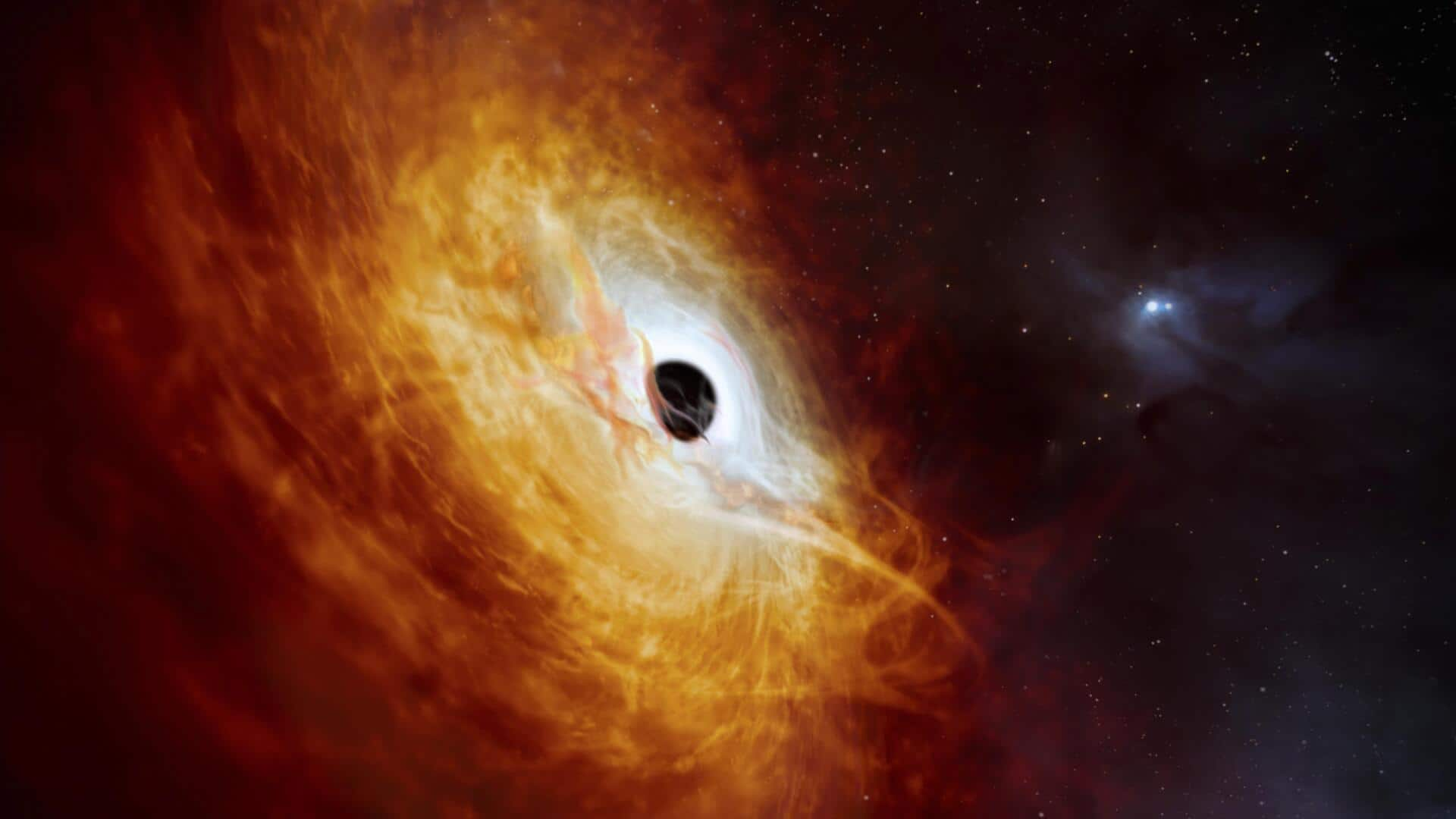
Scientists discover brightest and fastest-growing black hole in the universe
What's the story
Australian researchers have uncovered a massive black hole, 17 billion times bigger than our Sun, that devours the equivalent of one Sun each day.
The study, featured in Nature Astronomy, reveals a distant quasar housing the fastest-growing black hole that has ever been documented.
"It's a surprise it remained undetected until now," remarked co-author Christopher Onken from the Australian National University (ANU).
Features
Quasar J059-4351 is the brightest known object in the universe
Initially spotted using a telescope at ANU's Siding Spring Observatory in New South Wales, the black hole was later confirmed by the European Southern Observatory's Very Large Telescope.
The quasar, dubbed J059-4351, is now deemed the brightest object in the universe, shining 500 trillion times brighter than our Sun.
ANU's Christian Wolf, the lead author, noted that the black hole's remarkable growth rate leads to a massive release of light and heat.
Definition
What are quasars?
Despite not emitting any light by themselves, very large black holes form bright objects known as quasars. Such structures are positioned in the middle of galaxies. They get illuminated by the matter that heats up as they get pulled inside.
Structure
A glimpse into the black hole's accretion disk
Black holes are encircled by an accretion disk where material is pulled in prior to being consumed.
This specific black hole's accretion disk stretches seven light-years across.
"It looks like a gigantic and magnetic storm cell with temperatures of 10,000 degrees Celsius, lightning everywhere and winds blowing so fast they would go around Earth in a second," Wolf described.
The quasar J059-4351 is situated 12 billion light-years away from Earth.